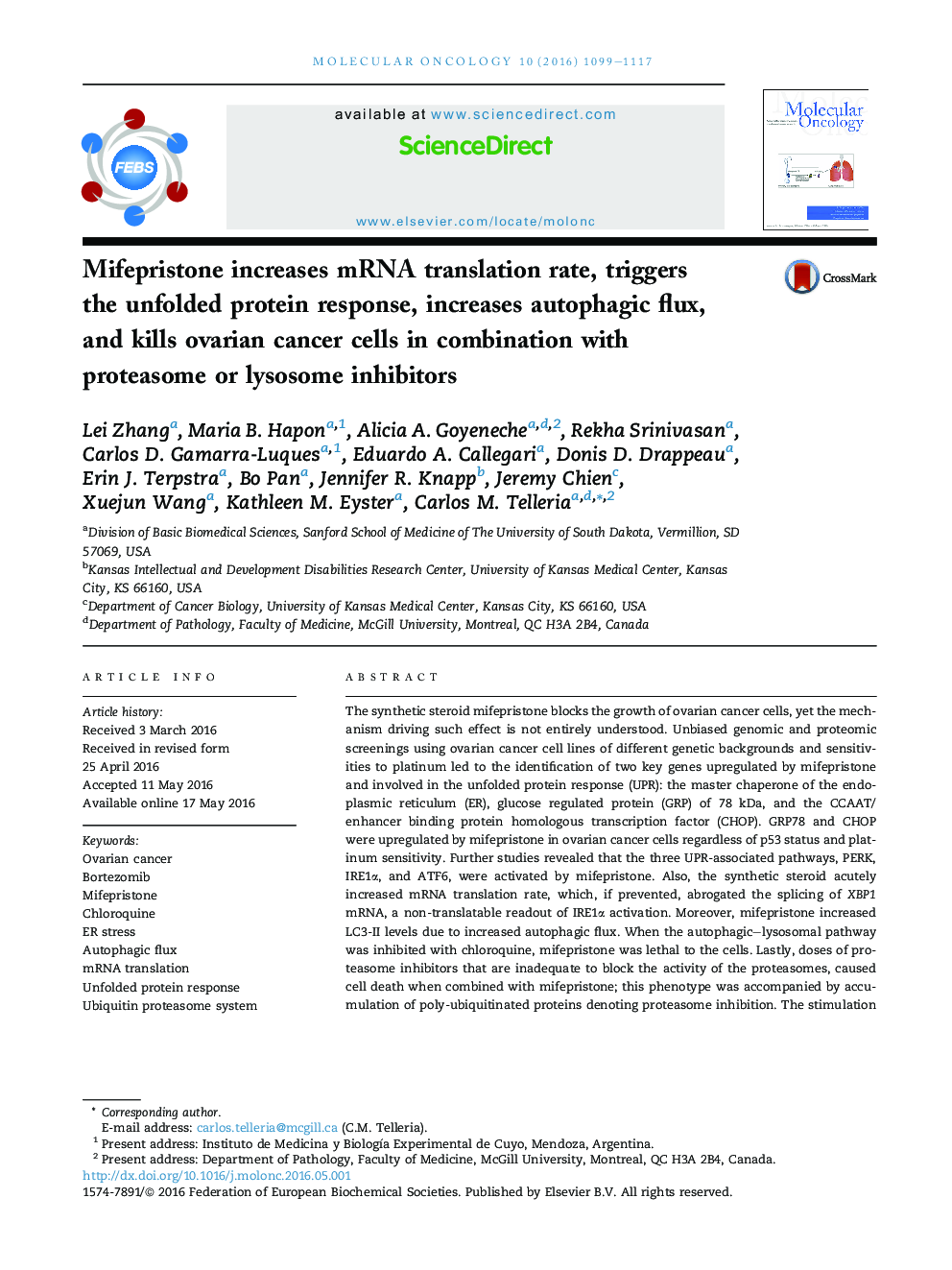| Article ID | Journal | Published Year | Pages | File Type |
|---|---|---|---|---|
| 5528607 | Molecular Oncology | 2016 | 19 Pages |
â¢Mifepristone triggers the unfolded protein response (UPR) in ovarian cancer cells.â¢Mifepristone-induced UPR is mediated by increased mRNA translation rate.â¢Mifepristone increases autophagic flux in ovarian cancer cells.â¢Mifepristone is lethal to ovarian cancer cells when combined with chloroquine.â¢Mifepristone kills ovarian cancer cells in combination with proteasome inhibitors.
The synthetic steroid mifepristone blocks the growth of ovarian cancer cells, yet the mechanism driving such effect is not entirely understood. Unbiased genomic and proteomic screenings using ovarian cancer cell lines of different genetic backgrounds and sensitivities to platinum led to the identification of two key genes upregulated by mifepristone and involved in the unfolded protein response (UPR): the master chaperone of the endoplasmic reticulum (ER), glucose regulated protein (GRP) of 78 kDa, and the CCAAT/enhancer binding protein homologous transcription factor (CHOP). GRP78 and CHOP were upregulated by mifepristone in ovarian cancer cells regardless of p53 status and platinum sensitivity. Further studies revealed that the three UPR-associated pathways, PERK, IRE1α, and ATF6, were activated by mifepristone. Also, the synthetic steroid acutely increased mRNA translation rate, which, if prevented, abrogated the splicing of XBP1 mRNA, a non-translatable readout of IRE1α activation. Moreover, mifepristone increased LC3-II levels due to increased autophagic flux. When the autophagic-lysosomal pathway was inhibited with chloroquine, mifepristone was lethal to the cells. Lastly, doses of proteasome inhibitors that are inadequate to block the activity of the proteasomes, caused cell death when combined with mifepristone; this phenotype was accompanied by accumulation of poly-ubiquitinated proteins denoting proteasome inhibition. The stimulation by mifepristone of ER stress and autophagic flux offers a therapeutic opportunity for utilizing this compound to sensitize ovarian cancer cells to proteasome or lysosome inhibitors.
